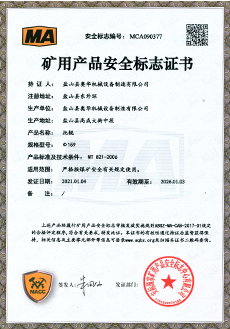 Afrikaans
Afrikaans  Albanian
Albanian  Amharic
Amharic  Arabic
Arabic  Armenian
Armenian  Azerbaijani
Azerbaijani  Basque
Basque  Belarusian
Belarusian  Bengali
Bengali  Bosnian
Bosnian  Bulgarian
Bulgarian  Catalan
Catalan  Cebuano
Cebuano  Corsican
Corsican  Croatian
Croatian  Czech
Czech  Danish
Danish  Dutch
Dutch  English
English  Esperanto
Esperanto  Estonian
Estonian  Finnish
Finnish  French
French  Frisian
Frisian  Galician
Galician  Georgian
Georgian  German
German  Greek
Greek  Gujarati
Gujarati  Haitian Creole
Haitian Creole  hausa
hausa  hawaiian
hawaiian  Hebrew
Hebrew  Hindi
Hindi  Miao
Miao  Hungarian
Hungarian  Icelandic
Icelandic  igbo
igbo  Indonesian
Indonesian  irish
irish  Italian
Italian  Japanese
Japanese  Javanese
Javanese  Kannada
Kannada  kazakh
kazakh  Khmer
Khmer  Rwandese
Rwandese  Korean
Korean  Kurdish
Kurdish  Kyrgyz
Kyrgyz  Lao
Lao  Latin
Latin  Latvian
Latvian  Lithuanian
Lithuanian  Luxembourgish
Luxembourgish  Macedonian
Macedonian  Malgashi
Malgashi  Malay
Malay  Malayalam
Malayalam  Maltese
Maltese  Maori
Maori  Marathi
Marathi  Mongolian
Mongolian  Myanmar
Myanmar  Nepali
Nepali  Norwegian
Norwegian  Norwegian
Norwegian  Occitan
Occitan  Pashto
Pashto  Persian
Persian  Polish
Polish  Portuguese
Portuguese  Punjabi
Punjabi  Romanian
Romanian  Russian
Russian  Samoan
Samoan  Scottish Gaelic
Scottish Gaelic  Serbian
Serbian  Sesotho
Sesotho  Shona
Shona  Sindhi
Sindhi  Sinhala
Sinhala  Slovak
Slovak  Slovenian
Slovenian  Somali
Somali  Spanish
Spanish  Sundanese
Sundanese  Swahili
Swahili  Swedish
Swedish  Tagalog
Tagalog  Tajik
Tajik  Tamil
Tamil  Tatar
Tatar  Telugu
Telugu  Thai
Thai  Turkish
Turkish  Turkmen
Turkmen  Ukrainian
Ukrainian  Urdu
Urdu  Uighur
Uighur  Uzbek
Uzbek  Vietnamese
Vietnamese  Welsh
Welsh  Bantu
Bantu  Yiddish
Yiddish  Yoruba
Yoruba  Zulu
Zulu belt drive pulley types
Understanding Belt Drive Pulley Types
Belt drive systems are widely used in various mechanical applications to transfer power from one component to another. The efficiency and reliability of these systems largely depend on the types of pulleys utilized in the drive mechanism. Understanding the different belt drive pulley types can help engineers, technicians, and enthusiasts select the most appropriate system for their specific needs.
What is a Belt Drive Pulley?
A pulley is a wheel with a grooved rim to support the movement of a belt. In belt drive systems, these pulleys connect different components, enabling the transfer of rotational motion. The belt runs over the pulleys, transmitting power through friction. Pulleys come in various designs, materials, and sizes, tailored to suit different applications.
Types of Belt Drive Pulleys
1. Standard Pulley Standard pulleys are the most commonly used type in belt drive systems. They typically have a uniform groove that accommodates standard flat or V-belts. These pulleys are straightforward in design and are effective in transferring power between adjacent shafts. Their simplicity makes them an excellent choice for basic mechanical applications.
2. V-Pulley V-pulleys are specially designed to work with V-belts, which have a trapezoidal cross-section. This shape allows for better grip and minimizes slippage, making V-pulleys ideal for high torque applications. V-pulleys are available in various sizes and groove angles, which influence their performance. The most common angles are 30, 38, and 45 degrees.
3. Variable Speed Pulley Variable speed pulleys allow for the adjustment of the drive speed ratio within a belt drive system. These pulleys can alter their diameter or groove width, enabling users to change the speed and torque characteristics of the drive. This versatility makes them suitable for applications requiring precise control over operational speed.
belt drive pulley types

4. Taper-Lock Pulley Taper-lock pulleys utilize a tapered sleeve for mounting on a shaft, allowing for easy installation and removal. This pully system provides precise alignment and reduces the risk of belt misalignment, which can lead to increased wear and tear on both belts and pulleys. Taper-lock pulleys are often used in heavy-duty applications due to their robustness.
5. Flat Pulley Flat pulleys feature a simple flat surface suitable for flat belts. They are commonly used in applications where the belt does not need to engage deeply in the groove, such as in conveyor systems. The simplicity of flat pulleys enables straightforward installation, though they may offer less grip compared to V-pulleys.
6. Idler Pulley Idler pulleys are not directly connected to the power source but are used to guide or tension the belt in a drive system. They help maintain proper belt tension and alignment, which is critical for the efficiency and longevity of the drive. Idler pulleys can be either fixed or adjustable, depending on the system’s requirements.
Factors to Consider When Selecting Pulleys
When choosing the appropriate type of pulley for a specific application, several factors must be considered
- Torque Requirements Higher torque applications often necessitate the use of V-pulleys due to their superior grip and power transmission efficiency. - Speed Control If variable speed is essential for the application, a variable speed pulley may be necessary to adjust output according to specific needs. - Space Constraints The available physical space can influence the type and size of the pulley selected, as certain designs may require more room for installation and operation. - Material and Durability Pulleys can be made from various materials, including aluminum, steel, and plastic. The choice of material will depend on the application’s specific environmental conditions and durability requirements.
Conclusion
In summary, selecting the right type of belt drive pulley is crucial for ensuring the optimal performance of a mechanical system. Each type of pulley serves a distinct function that can significantly affect the efficiency and reliability of power transmission. By understanding the characteristics and applications of different pulleys, users can make informed decisions that enhance the performance and longevity of their mechanical systems. Whether for industrial machinery, automotive applications, or any other purpose, the right pulley can make all the difference in achieving reliable, high-performance operation.
-
Revolutionizing Conveyor Reliability with Advanced Rubber Lagging PulleysNewsJul.22,2025
-
Powering Precision and Durability with Expert Manufacturers of Conveyor ComponentsNewsJul.22,2025
-
Optimizing Conveyor Systems with Advanced Conveyor AccessoriesNewsJul.22,2025
-
Maximize Conveyor Efficiency with Quality Conveyor Idler PulleysNewsJul.22,2025
-
Future-Proof Your Conveyor System with High-Performance Polyurethane RollerNewsJul.22,2025
-
Driving Efficiency Forward with Quality Idlers and RollersNewsJul.22,2025





























